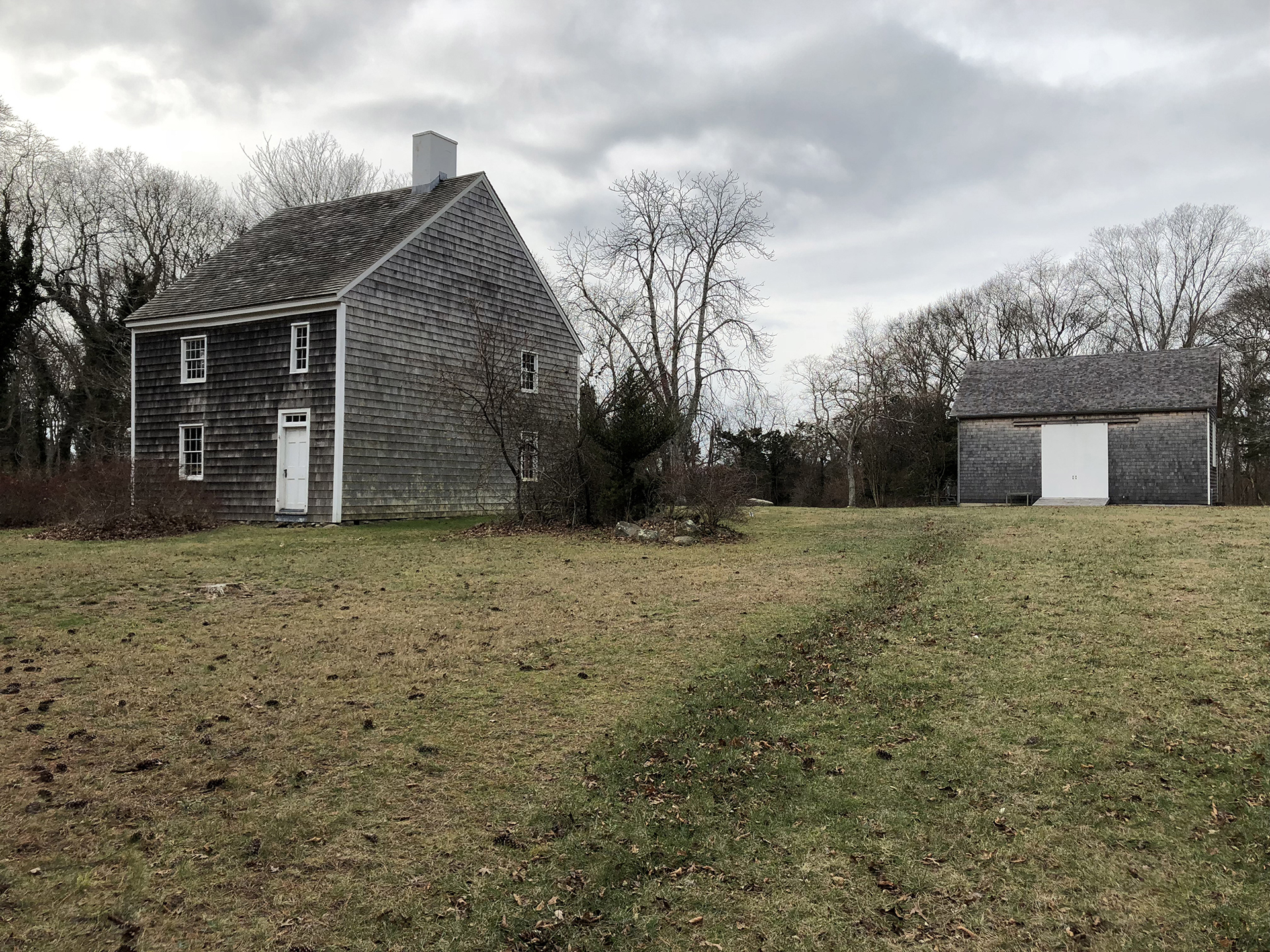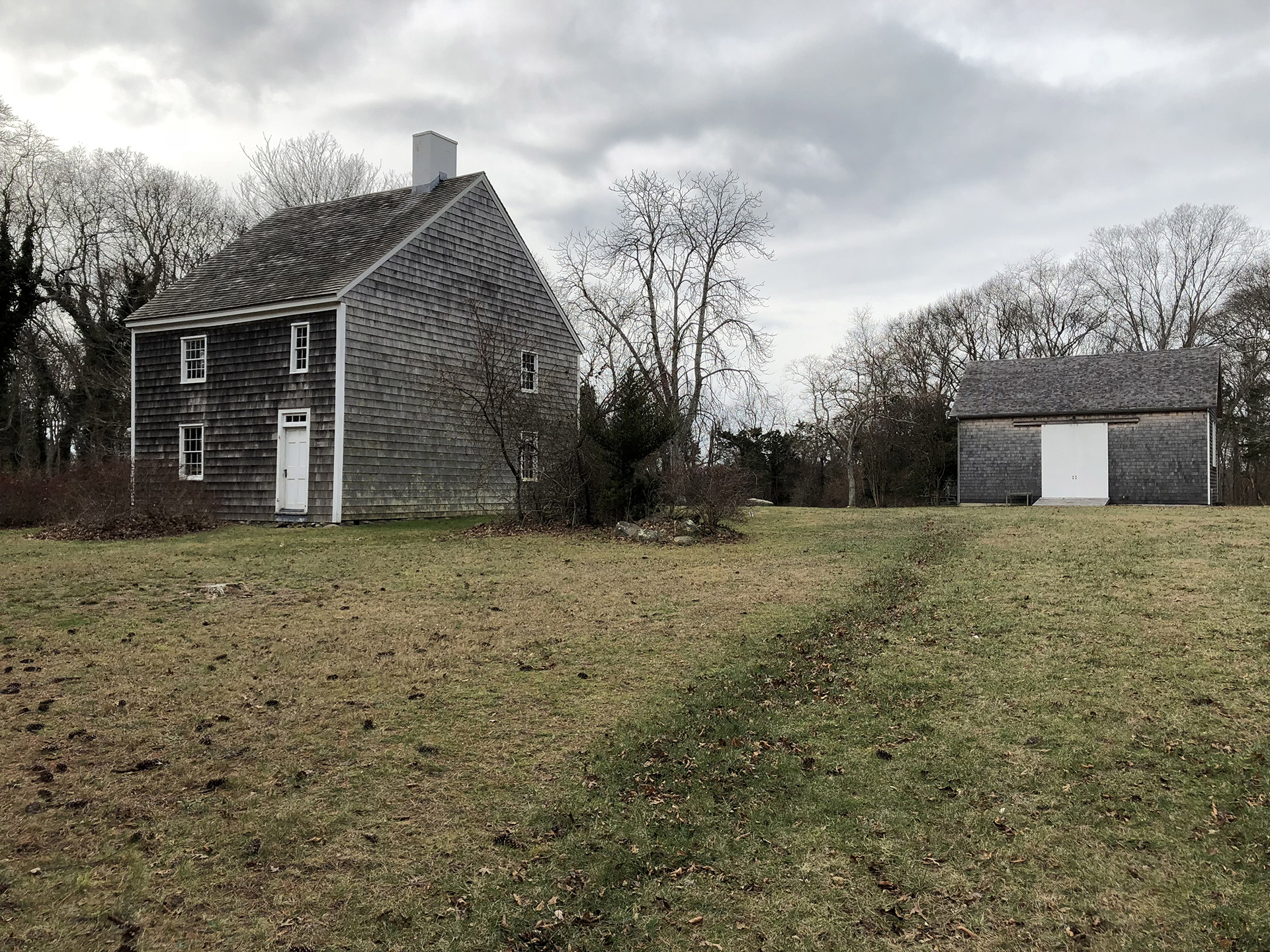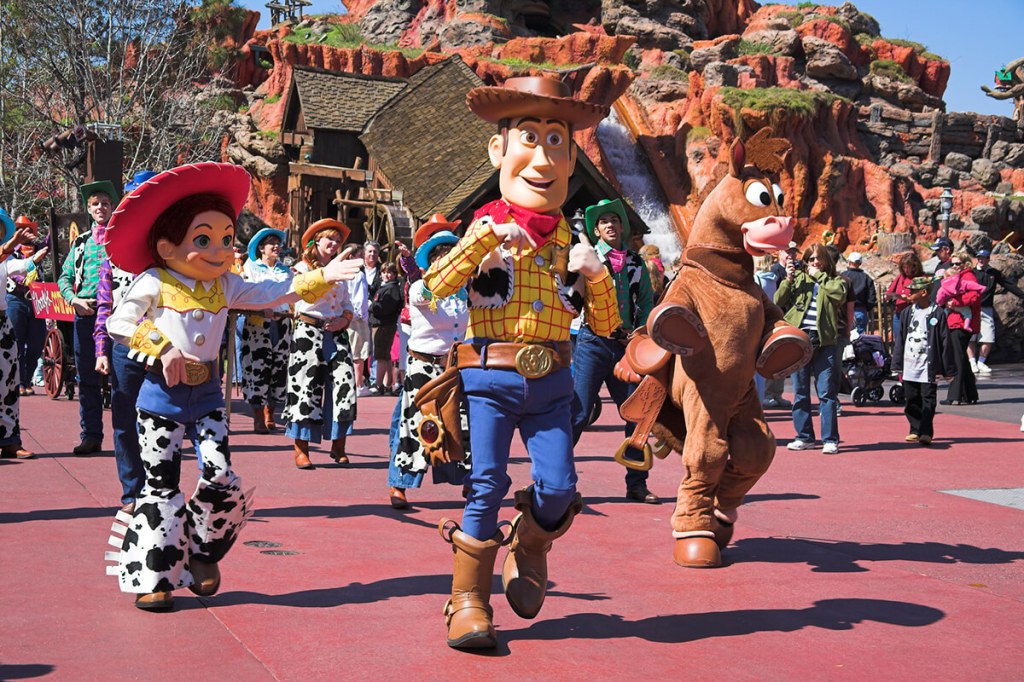Duck Creek Farm Arts Center Before Town Board


The management of an historic and storied East Hampton Town-owned property in Springs was the topic of discussion during one of the public hearings held before the town board on December 6.
Duck Creek Farm is a 6.7-acre property that is the last vestige of a 130-acre farm that once covered the land between Three Mile Harbor Hog Creek Highway and Three Mile Harbor north of Duck Creek. “It was farmed by the Edwards family, original settlers of East Hampton. Duck Creek Farm was operated by John Edwards, his sons, and his grandsons from 1795 to 1902. The Edwards farmhouse that survives today was probably built by John Edwards in 1795 but may have been built by his son, Joseph Edwards, in 1815,” according to a document prepared for the East Hampton Town Board in 2009 pursuant to its designation of the remaining 6.7 acres as an historic landmark.
The acreage in question was purchased by artist John Little in 1948. “That same year he moved a barn from the farm of David Johnson Gardiner on James Lane, East Hampton, to Duck Creek Farm for use as a studio.” Little’s friends included Jackson Pollock and Lee Krasner, whose property on Fireplace Road was to the east of Little’s. Eventually designer and artist Helmut Lang purchased the property. After Lang bought an oceanfront property off Tyson Lane, for which he reportedly outbid Jerry Seinfeld, who would eventually buy another estate on Further Lane, for it, Lang sold the Duck Creek Farm property to the town. The $2.5 million purchase was approved by the town board in December 2004.
In 2017, after 18 months of restoration, the property became the Arts Center at Duck Creek, whose mission, according to its website, “is to perpetuate the goals and the spirit of artist John Little… Dedicated to bringing contemporary art and artists to the East End, John Little made the barn available as a meeting place for local artists and guest quarters for those visiting.” The arts center is open from May 1 through October 31, and hosts both performing artists, as well as visual artists.
This past December 6, the town board heard from Scott Wilson, who manages the town’s land acquisitions. He told the town how the property would be managed over the next few years.
Wilson was followed by nine speakers, all of whom were in favor of the proposed management plan, except for one, Martin Drew. “I am very concerned about this whole situation, because I spent the last two years of my life trying to get the Jackson Pollock House to clean up their act on the other side of town in our area.” The Pollock-Krasner House had to curtail its availability to the public this past year in reaction to Drew’s complaints about visitors to the museum parking in the public right of way. He said the parking on Squaw Road, which is the access point to the property, was dangerous. “All I see is you folks handing stuff off to the art community while we folks in recreation get nothing,” Drew added.
The speakers who followed Drew, many of whom live in the immediate vicinity of Duck Creek Farm, disagreed strongly with his assertions. Ira Barocas, who played a role in establishing the arts center, and lives on nearby Babes Lane, said that there had not been “one complaint from any neighbor on any event we have ever had.” He added that neighbors of the arts center “enjoy the presence of that place, as opposed to other people who don’t live there.”
Loring Bolger, another supporter, read letters into the record from Judith Hope, Helen Harrison, and Sidney Albertini. Harrison heads the Pollock-Krasner House.
Town Board member Kathee Burke-Gonzalez said that all events needed permits, and that, for those that require parking on Squaw Road, the center is required to put someone on the street to direct traffic, and restrict parking to one side of the road, only.
Tara Israel, a photographer, had a show there this year. “Everybody came in with a smile,” she said. “Art shouldn’t be held behind glass especially when it concerns the community.” She added, “There are a lot of kids who don’t have the opportunity to do something like that unless you have the money.”
Claudia Spinelli spoke about the world of Krasner and Pollock and Little, then compared it to the world we live in today. “Art is now a commodity. It is very difficult for artists to get a show. . . we don’t have anything like this.”
t.e@indyeastend.com



